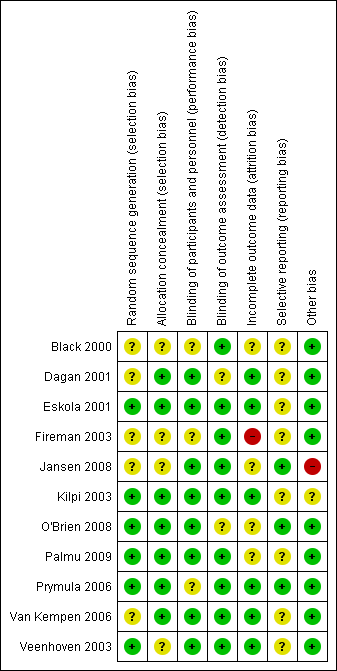Contenido relacionado
Revisiones y protocolos relacionados
Joline LH de Sévaux, Roderick P Venekamp, Vittoria Lutje, Eelko Hak, Anne GM Schilder, Elisabeth AM Sanders, Roger AMJ Damoiseaux | 24 noviembre 2020
Marilla G Lucero, Vernoni E Dulalia, Leilani T Nillos, Gail Williams, Rhea Angela N Parreño, Hanna Nohynek, Ian D Riley, Helena Makela | 6 octubre 2009
Mohd N Norhayati, Jacqueline J Ho, Mohd Y Azman | 17 octubre 2017
Anna M Scott, Justin Clark, Blair Julien, Farhana Islam, Kristian Roos, Keith Grimwood, Paul Little, Chris B Del Mar | 18 junio 2019
Amir Azarpazhooh, Herenia P Lawrence, Prakeshkumar S Shah | 3 agosto 2016
Ruth Foxlee, Ann‐Charlott Johansson, Jessika Wejfalk, Liz Dooley, Chris B Del Mar | 19 julio 2006
Sarah Moberley, John Holden, David Paul Tatham, Ross M Andrews | 31 enero 2013
Amanda J Leach, Peter S Morris | 18 octubre 2006
Anita L Kozyrskyj, Terry P Klassen, Michael Moffatt, Krystal Harvey | 8 septiembre 2010
Cassie Coleman, Michael Moore | 16 marzo 2011
Editoriales
Chris Del Mar, Jane Smith | 14 mayo 2014



